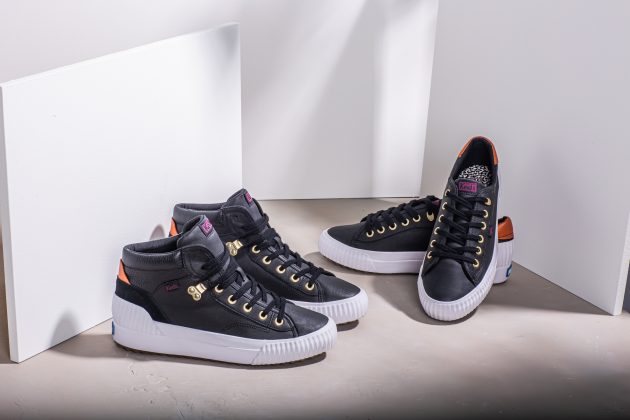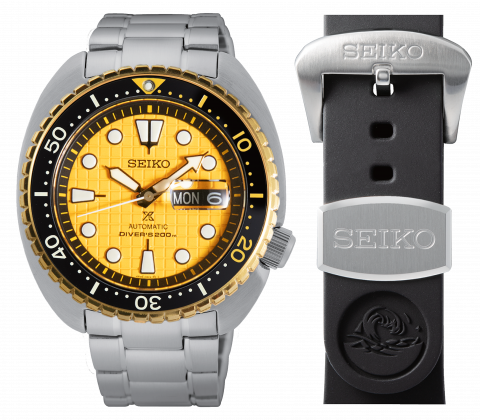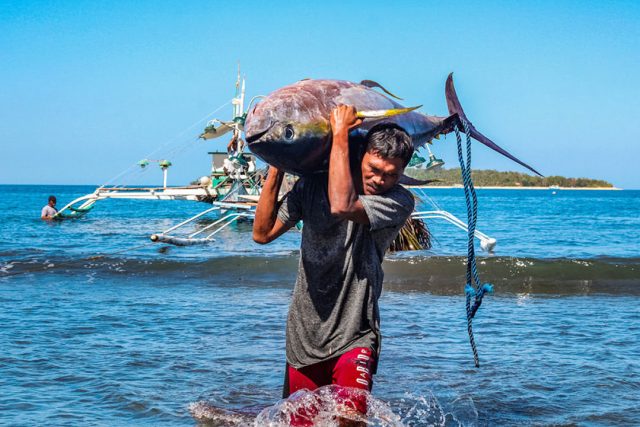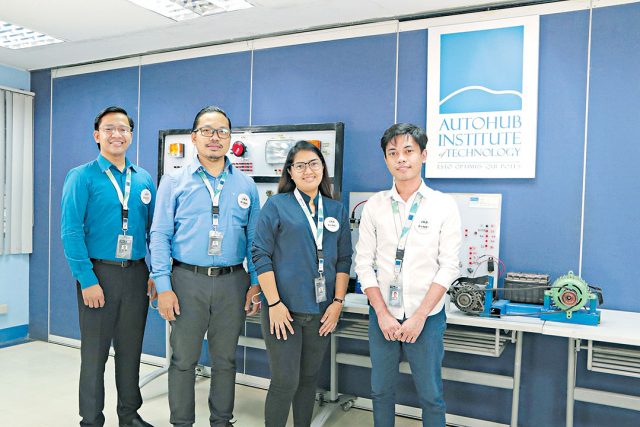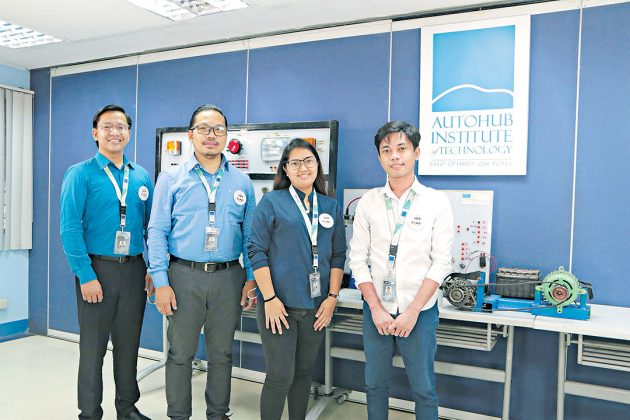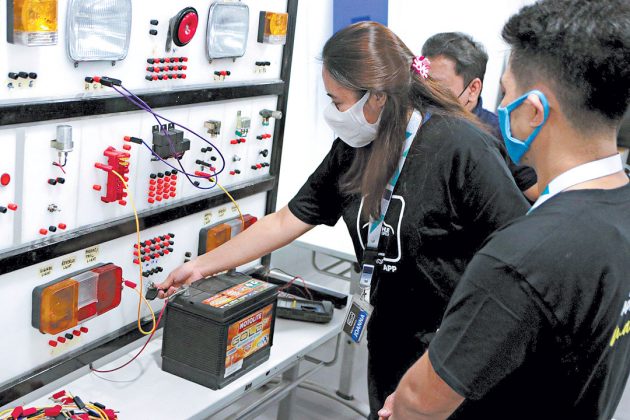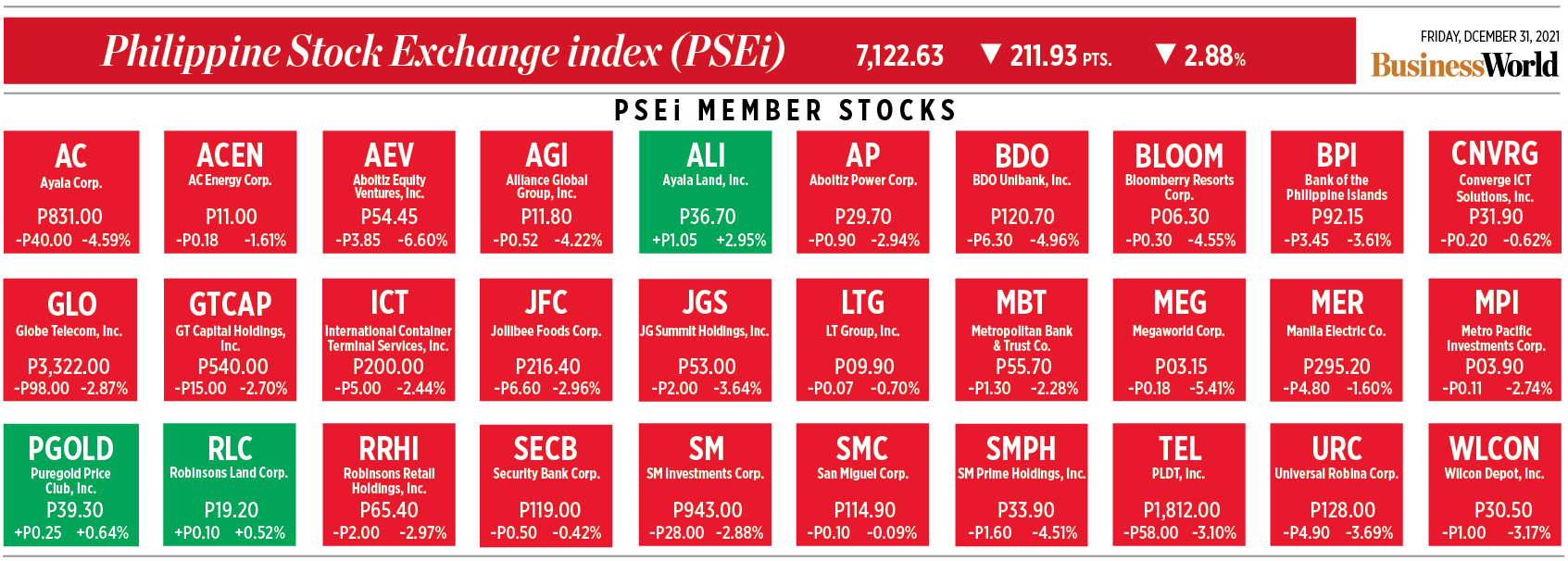BIENDI MAGANGA-MOUSSAVOU had a problem.
As Gabon’s minister of fisheries, agriculture and food security, he helps oversee the African country’s marine protected areas, some of the most extensive in Africa. Covering 27% of Gabon’s Exclusive Economic Zone, these waters are supervised using monitoring technology that tracks larger vessels, which are required to report their catch. But many of Gabon’s fishers run smaller operations that don’t have such systems, or even automated identification.
“Thousands of boats were going out and we didn’t know where they were going or for how long,” Magana-Moussavou said in an interview. And since whatever they caught and where they caught it wasn’t registered, scientists couldn’t tell whether fishing restrictions were being respected or whether fish stocks in protected areas were increasing — or declining.
Gabon’s problem is the world’s problem. More than 30 million fishers worldwide — around 90% of the total, according to the United Nations Food and Agriculture Organization (FAO) — are considered small-scale. Together, they bring in about half of the world’s catch. With human populations rising and developing nations getting wealthier, the demand for seafood is escalating. An accurate assessment of the shrinking global fish supply is thus crucial to planetary food security. Right now though, that’s impossible.
“Millions of tons of fish from the small-scale fisheries are ‘hidden’ in the sense of being invisible and unreported,” the FAO warned in its 2020 report on the world’s fisheries.
But in an effort to plug this data hole, some low-fi technology is being leveraged. Gabon partnered with CLS Group, a subsidiary of France’s National Center for Space Studies, which uses hundreds of satellites to provide monitoring and surveillance services for governments and scientists. Together, they developed a solar-powered device the size of a loaf of bread called NEMO.
The device relays its location via cell tower or satellite, enabling small fishers to register their catch. If widely adopted, such technology could go a long way toward filling in that critical food picture beneath the waves. In doing so, it might reveal how much time humans have left to adopt more sustainable fishing practices.
CLS said it has close to 3,000 NEMO devices installed on vessels operating in the waters of 40 countries, including France, Greece, Peru, Ecuador, Ivory Coast, Seychelles, Bangladesh and Australia. Gabon started using NEMO in July.
The program aims to eventually deploy as many as 2 million devices worldwide, the company said. While each costs around $200, international NGOs including New York’s Wildlife Conservation Society and local groups are stepping up to help pay for the devices, according to CLS.
“Any data at all would help address a major gap in our collective knowledge,” said Program Manager Michel Denjean. Even a sampling of data from small fishers, or just knowing where a boat spends its time and for how long, can provide valuable direction for conservation, he said.
But why would a subsistence fisher take part? Already barred from working in certain waters and under pressure from shifting migration patterns and falling oxygen levels triggered by warming seas, it’s reasonable to assume many wouldn’t be interested.
Safety, apparently, is the lure. NEMO can also activate a distress signal. When small boats lose sight of shore — either because they need to go farther out to find fish or just because the weather changes—they can get lost. Motors can fail, and not everyone carries a sail for emergencies. And if they’re more than a couple of miles offshore, mobile phones won’t pick up a signal.
“It’s not just control,” Maganga-Moussavou said. “It’s a way to protect the fishermen themselves.”
Fish consumption has been rising at almost double the rate of population growth for more than half a century, outpacing even animal proteins. Humans eat more than twice as much seafood as they did in 1960, with most of the increase occurring in the developing world. According to the FAO, less than two-thirds of fish stocks are now within biologically sustainable levels — down from 90% in 1974.
“One of the major challenges that fisheries face when assessing their ecological performance is the lack of data on, for example, stock assessment, species, and areas fished,” said Amanda Lejobowicz, head of fisheries standard, accessibility, at the Marine Stewardship Council. “That is particularly true for small-scale fishers and those in developing economies.”
Eric Terrill, director of the Coastal Observing Research and Development Center at the Scripps Institution of Oceanography, agreed. “Low-cost transponding devices provide a great opportunity to track patterns of fishing pressure from a cross-section of harvesters not normally managed,” he said.
The idea for NEMO had its genesis in Senegal, where a local fishery told the company that rising ocean temperatures and competition from heavy Chinese trawlers were pushing small fishers farther out to sea. “We started to develop a satellite connection for tracking but also for assistance request,” said Hervé Galabert, CLS director of sustainable fisheries management. “They wanted something robust, solid, simple, and affordable.”
NEMO transmits to a constellation of seven nanosatellites already used for animal tracking and climate research, the company said. Starting in 2023, it will switch over to a new group of 25 satellites developed by CLS subsidiary Kinéis, with space startup RocketLab contracted for the launch.
Even with the promise of additional safety, buy-in from small fishers remains a problem. With fishers licensed to operate in Gabon’s protected area for only a few hours per day, Maganga-Moussavou concedes NEMO makes it easier to catch those who stay too long. “We can monitor their activity and see what they do and fine them if they do wrong,” he said. But he added that fishers can cite NEMO data to prove their innocence if accused of illegal fishing.
“Safety of fishers is a big concern at sea and on the larger lakes in Africa,” said Sandy Davies, technical expert with the Stop Illegal Fishing Secretariat, a southern Africa NGO. “NEMO may well garner interest as storms intensify and fishers are pushed further from shore.”
The market might provide further incentive. Fish with an eco-label like that of the MSC fetches more money. Though many small-scale fishers are connected to only local markets, interest in sustainably-caught fish is growing everywhere, particularly where there’s a strong tourist presence, such as Greece, the Maldives and Ecuador.
And while using such devices is still voluntary, it may soon become compulsory. New legislation in Gabon will soon require installation of a NEMO to procure a license for commercial fishing. — Bloomberg









